Abstract
The delayed onset of anuria/oliguria in acute tubular necrosis has been theorized to represent a complicating compartment syndrome, i.e., parenchymal swelling within an unyielding capsule. To test this proposition, 12 monkeys had suprarenal aortic cross-clamping, followed by unilateral renal decapsulation to create an experimental as well as a control kidney unit in the same animal. Histologic examination uniformly confirmed tubular necrosis at death or sacrifice. Subsequent split renal function studies (creatinine, urea, and free water clearances) indicated significantly greater maintenance of renal function by the decapsulated kidney than by its paired control. Clinical evaluation in 21 hemorrhagic shock patients, with the capsule of one kidney stripped, revealed on follow-up that 15 developed a renal failure consistent with acute tubular necrosis. Although three patients with polyuric failure died before split studies could be run and two others have been too recent for computer analysis to have been completed, nine of the remaining ten had significantly greater renal plasma flows (194 versus 121 ml/min M2, p < .01) and significantly greater urine flows (.99 versus .18 ml/min M2, p < .01) on the decapsulated side than on the control, as determined by differential renal scans. No significant difference in these same lateralized renal functions was noted in the tenth patient with renal failure and in the six survivors without renal failure. Renal decapsulation as prophylaxis reduced the anticipated incidence of oliguria/anuria from an expected 75% to 7% (p < .01) in these 21 shock patients. Such data suggest that delayed renal ischemia, possibly based on a compartment syndrome, may be the cause for a progression of acute tubular necrosis from polyuria to oliguria and then to anuria.
Full text
PDF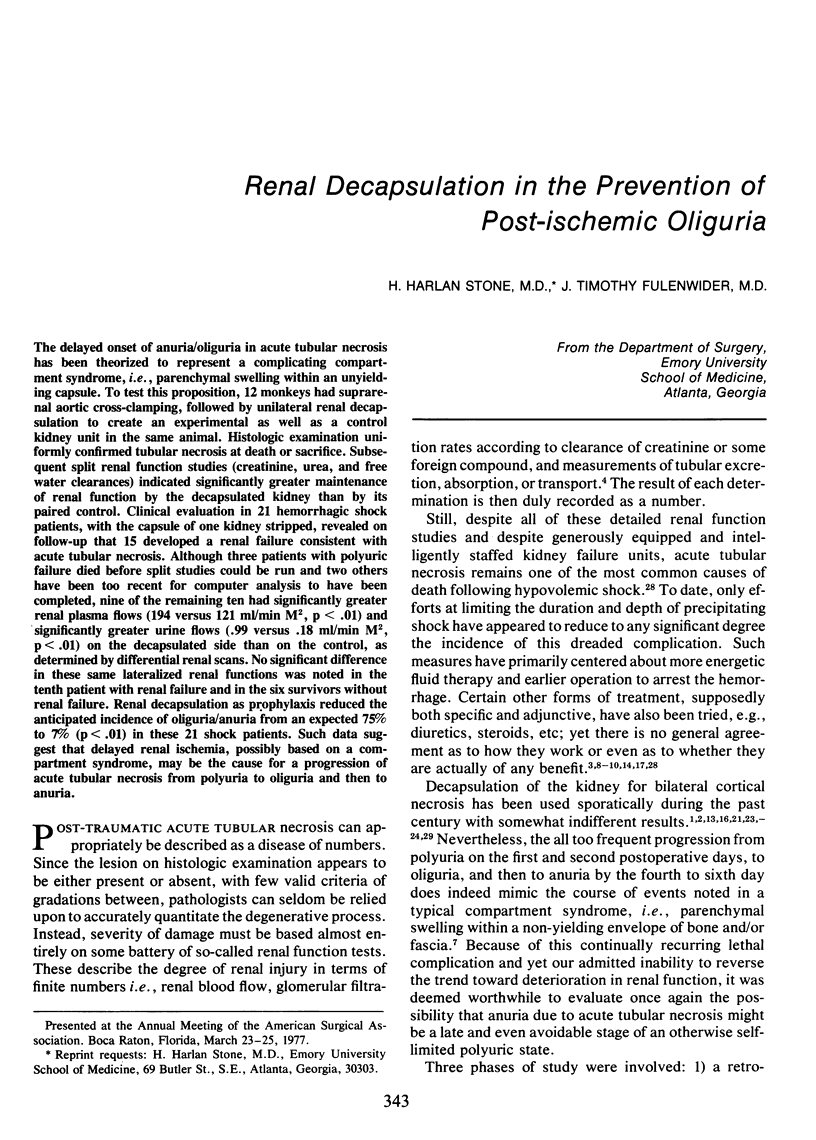
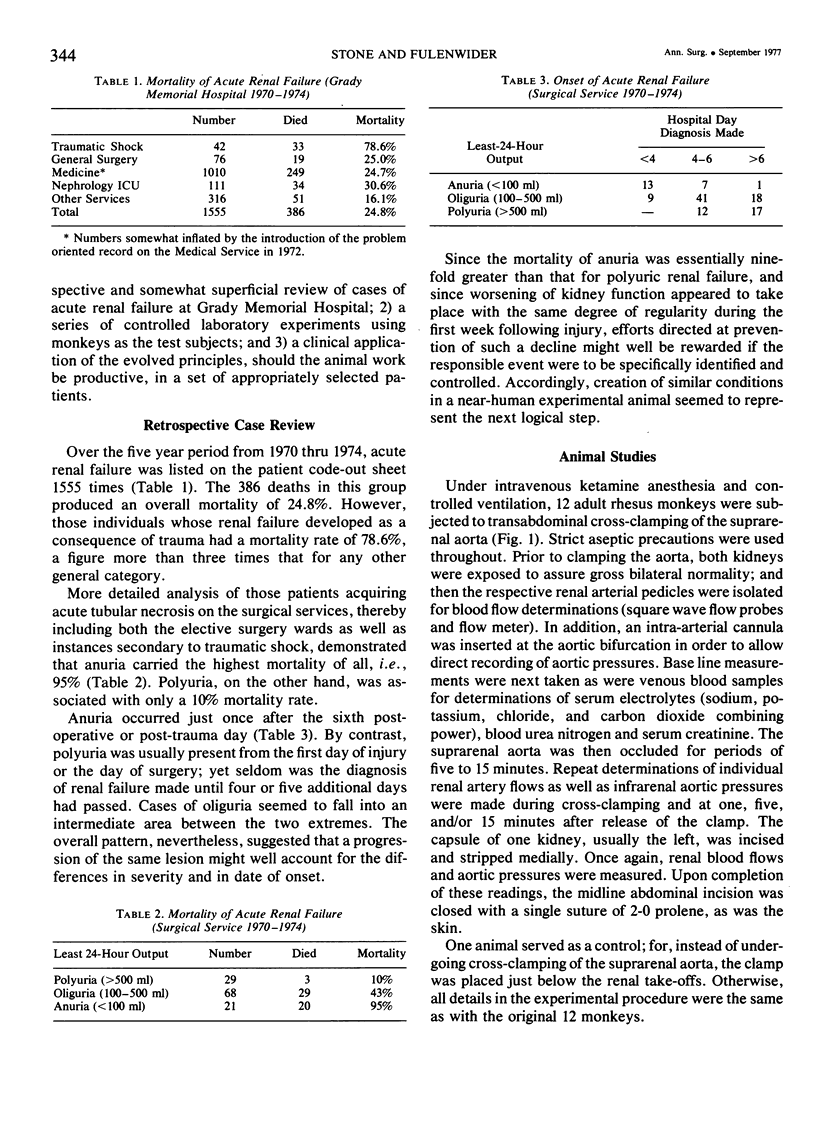
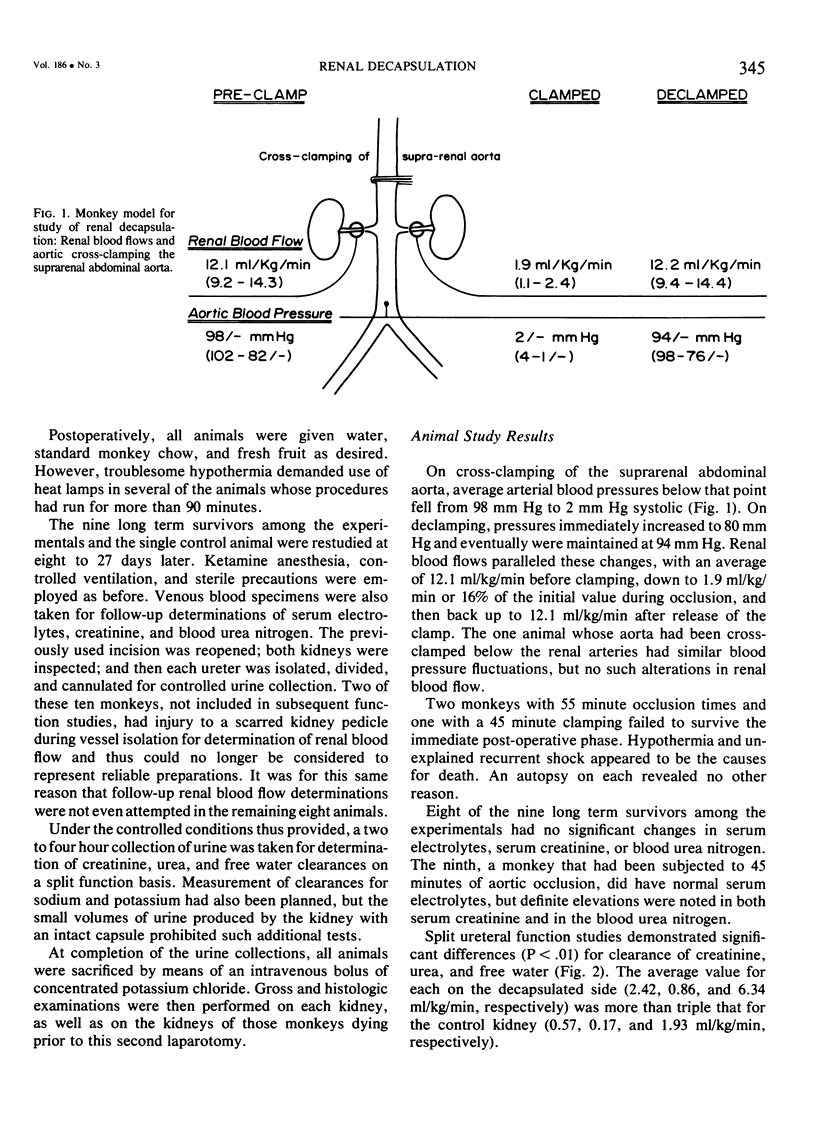
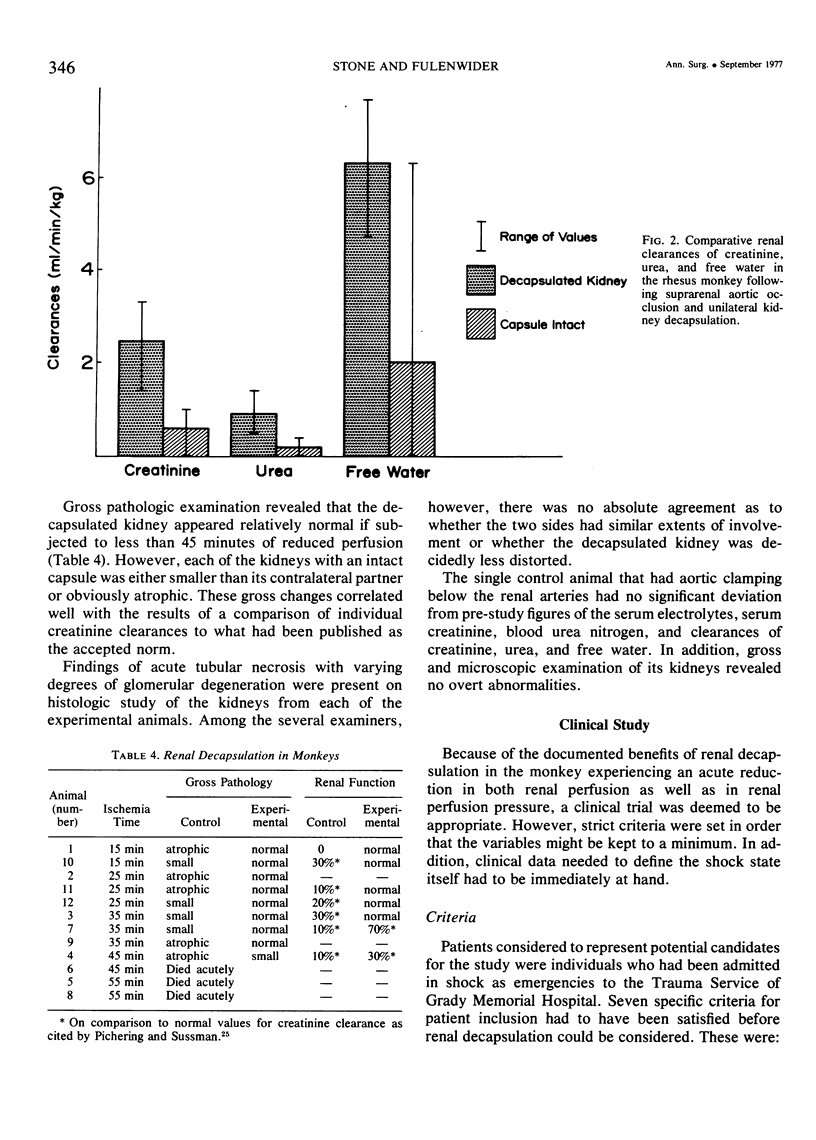
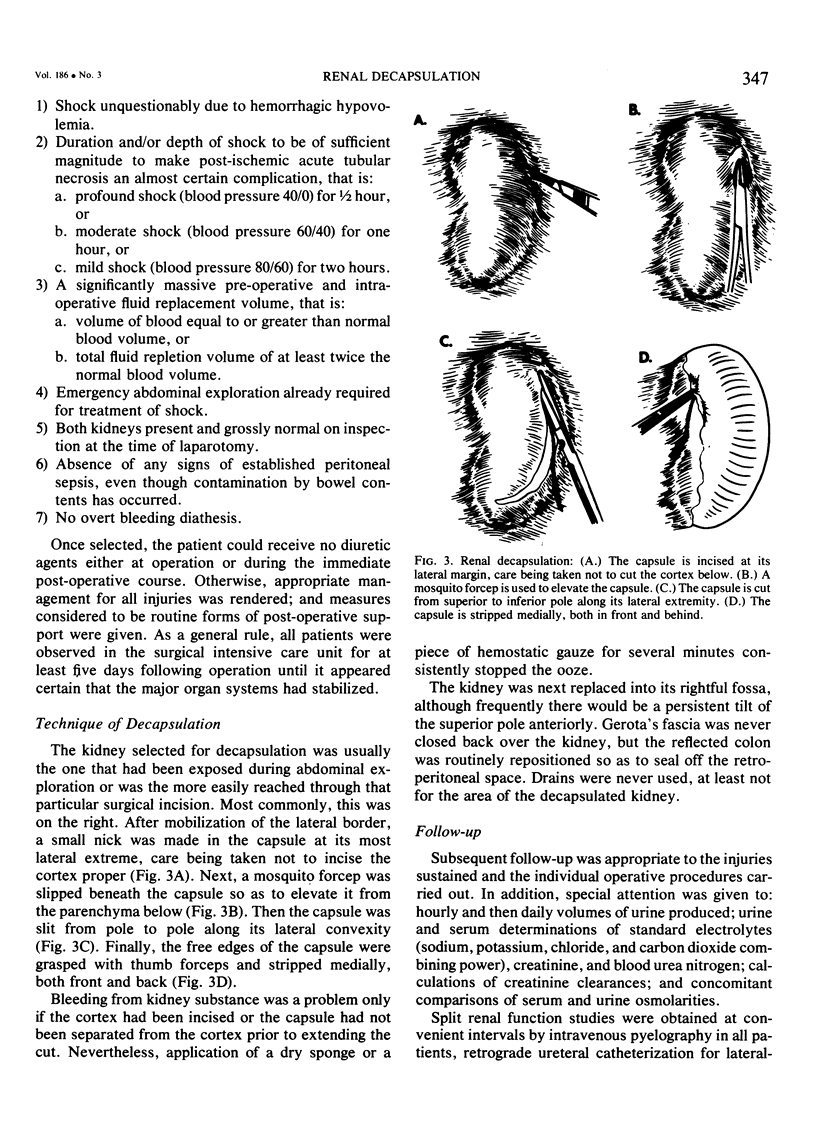
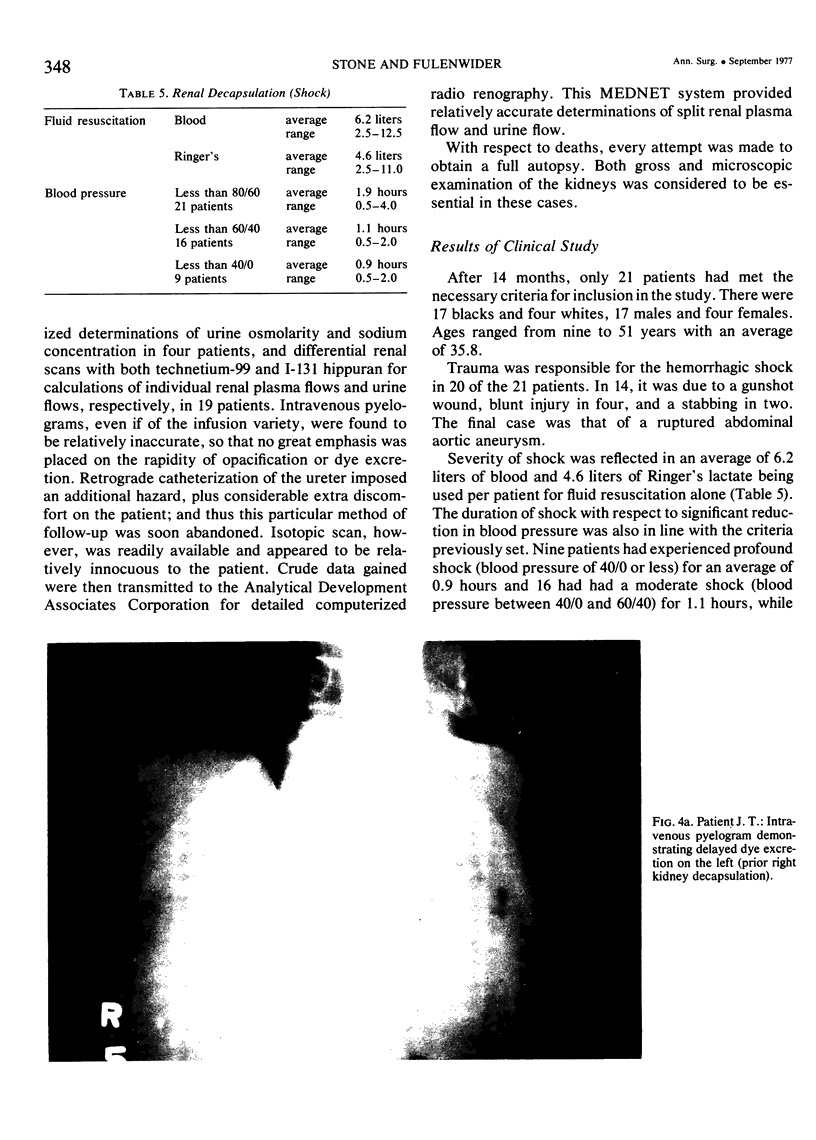
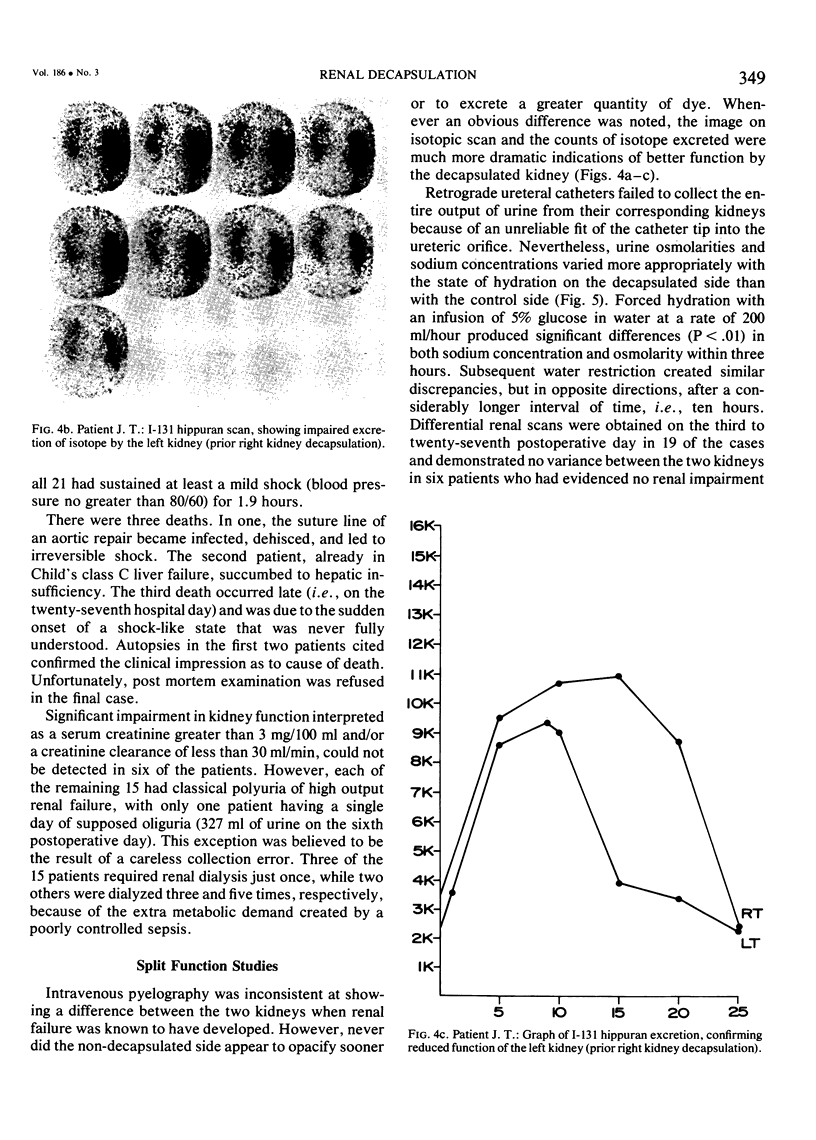
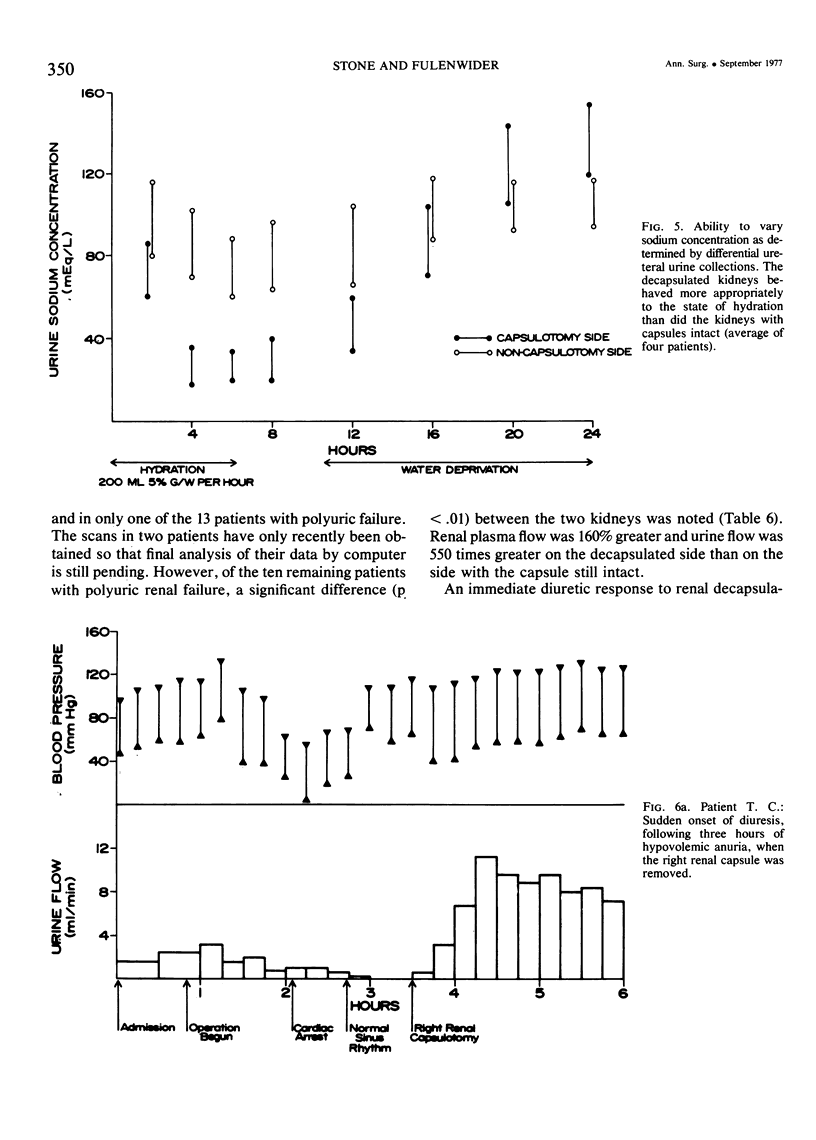
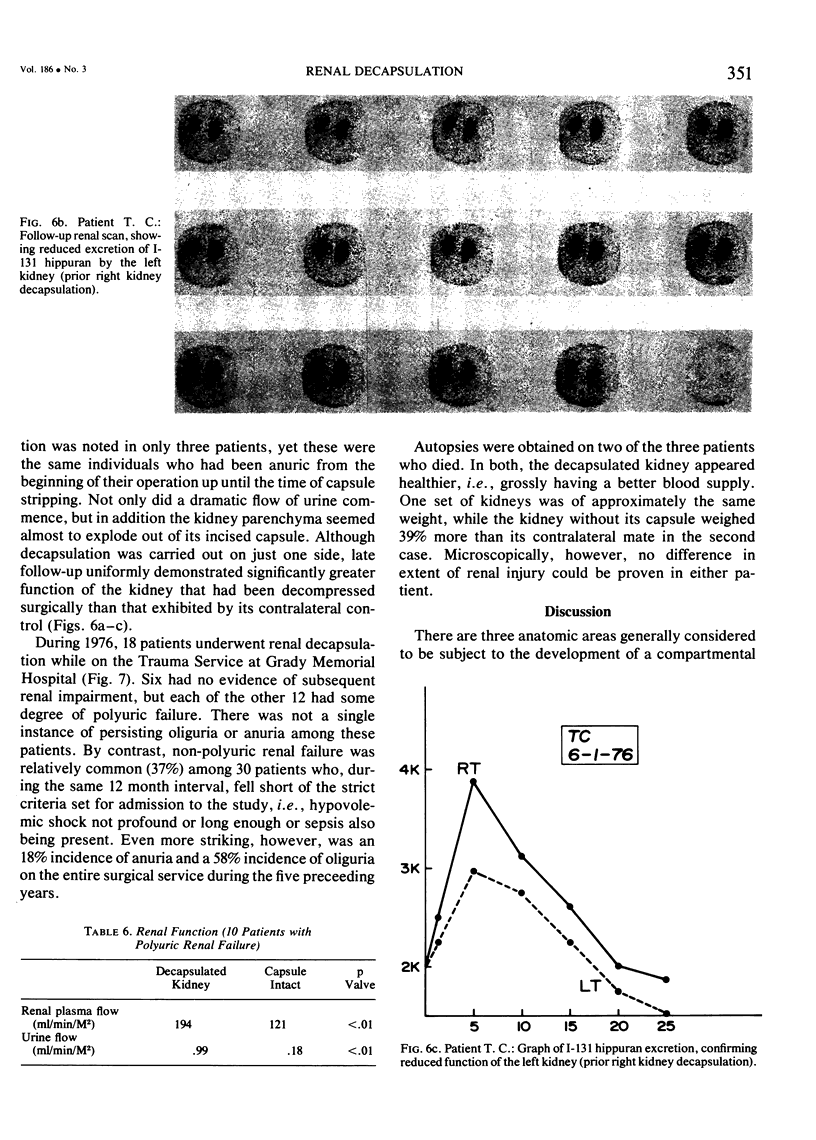

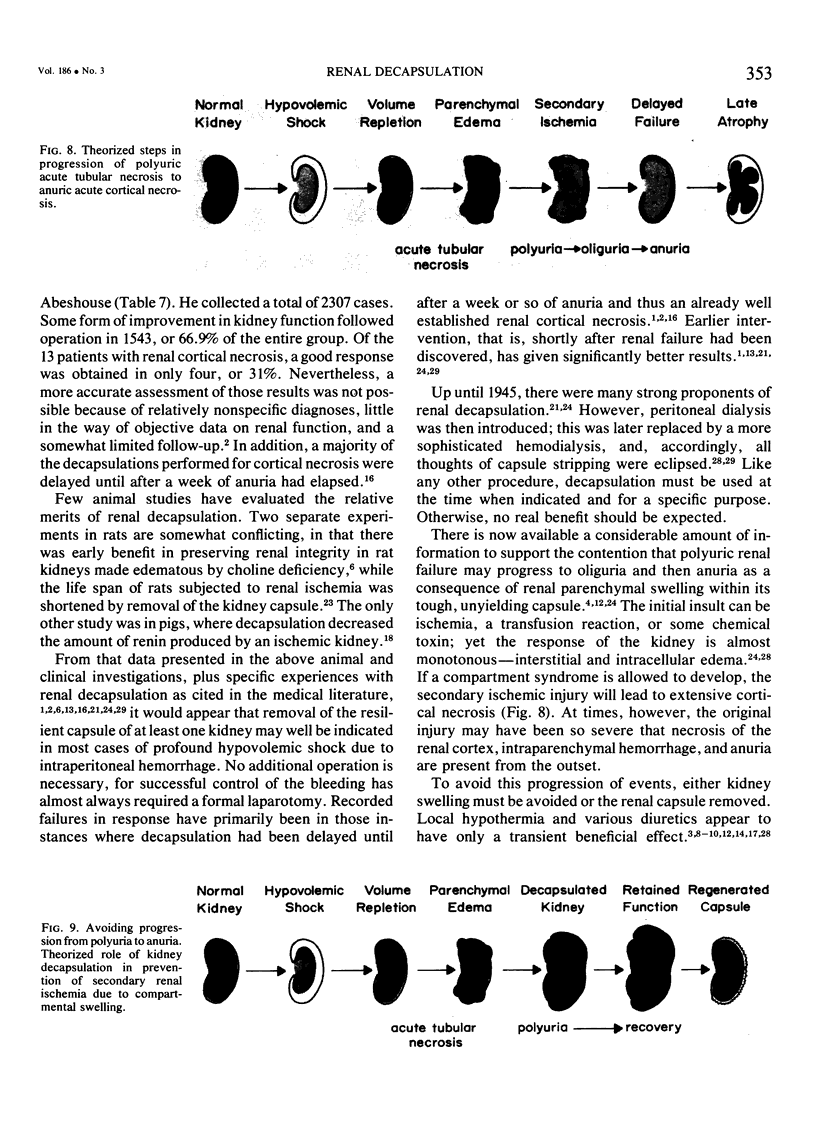
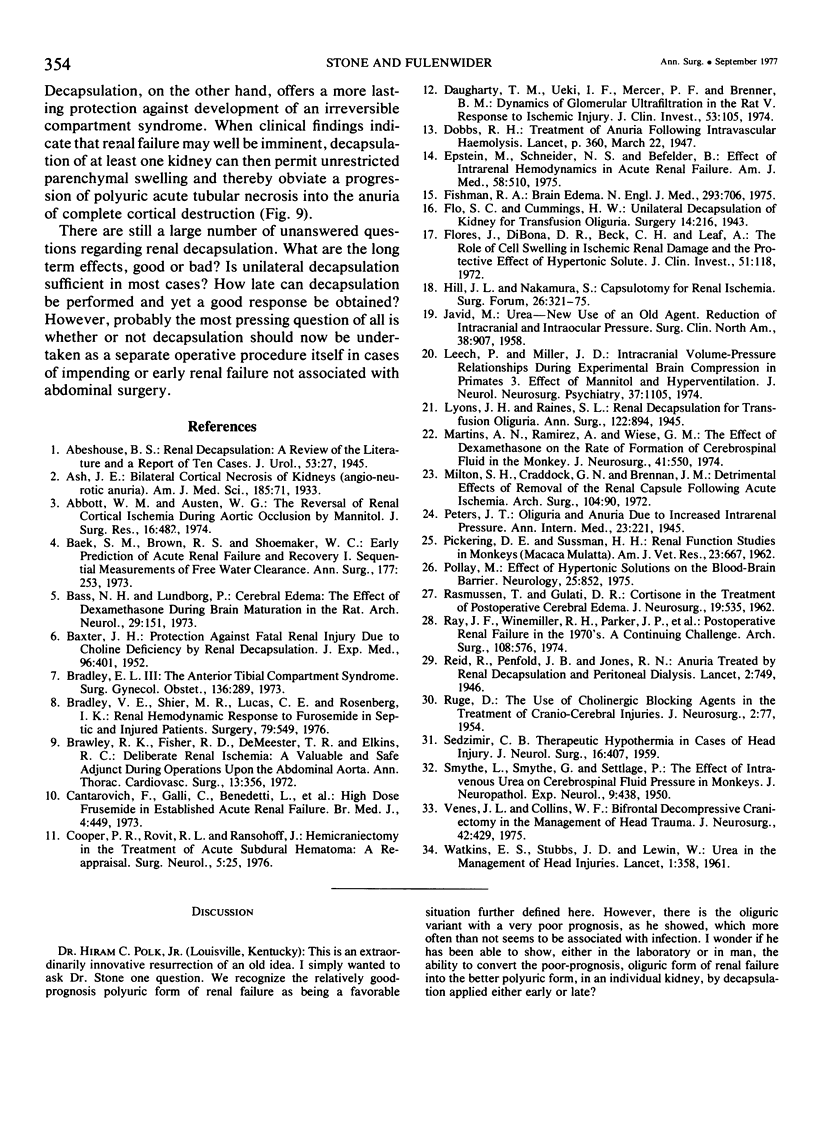
Images in this article
Selected References
These references are in PubMed. This may not be the complete list of references from this article.
- Abbott W. M., Austen W. G. The reversal of renal cortical ischemia during aortic occlusion by mannitol. J Surg Res. 1974 May;16(5):482–489. doi: 10.1016/0022-4804(74)90073-0. [DOI] [PubMed] [Google Scholar]
- BAXTER J. H. Protection against fatal renal injury due to choline deficiency by renal decapsulation. J Exp Med. 1952 Nov;96(5):401–408. doi: 10.1084/jem.96.5.401. [DOI] [PMC free article] [PubMed] [Google Scholar]
- Baek S. M., Brown R. S., Shoemaker W. C. Early prediction of acute renal failure and recovery. I. Sequential measurements of free water clearance. Ann Surg. 1973 Mar;177(3):253–258. doi: 10.1097/00000658-197303000-00001. [DOI] [PMC free article] [PubMed] [Google Scholar]
- Bass N. H., Lundborg P. Cerebral edema. The effect of dexamethasone during brain maturation in the rat. Arch Neurol. 1973 Sep;29(3):151–157. doi: 10.1001/archneur.1973.00490270033004. [DOI] [PubMed] [Google Scholar]
- Bradley E. L., 3rd The anterior tibial compartment syndrome. Surg Gynecol Obstet. 1973 Feb;136(2):289–297. [PubMed] [Google Scholar]
- Bradley V. E., Shier M. R., Lucas C. E., Rosenberg I. K. Renal hemodynamic response to furosemide in septic and injured patients. Surgery. 1976 May;79(5):549–554. [PubMed] [Google Scholar]
- Brawley R. K., Fisher R. D., DeMeester T. R., Elkins R. C. Deliberate renal ischemia. A valuable and safe adjunct during operations upon the abdominal aorta. Ann Thorac Surg. 1972 Apr;13(4):356–363. doi: 10.1016/s0003-4975(10)64867-9. [DOI] [PubMed] [Google Scholar]
- Cantarovich F., Galli C., Benedetti L., Chena C., Castro L., Correa C., Perez Loredo J., Fernandez J. C., Locatelli A., Tizado J. High dose frusemide in established acute renal failure. Br Med J. 1973 Nov 24;4(5890):449–450. doi: 10.1136/bmj.4.5890.449. [DOI] [PMC free article] [PubMed] [Google Scholar]
- Cooper P. R., Rovit R. L., Ransohoff J. Hemicraniectomy in the treatment of acute subdural hematoma: a re-appraisal. Surg Neurol. 1976 Jan;5(1):25–28. [PubMed] [Google Scholar]
- Daugharty T. M., Ueki I. F., Mercer P. F., Brenner B. M. Dynamics of glomerular ultrafiltration in the rat. V. Response to ischemic injury. J Clin Invest. 1974 Jan;53(1):105–116. doi: 10.1172/JCI107527. [DOI] [PMC free article] [PubMed] [Google Scholar]
- Epstein M., Schneider N. S., Befeler B. Effect of intrarenal furosemide on renal function and intratenal hemodynamics in acute renal failure. Am J Med. 1975 Apr;58(4):510–516. doi: 10.1016/0002-9343(75)90124-2. [DOI] [PubMed] [Google Scholar]
- Fishman R. A. Brain edema. N Engl J Med. 1975 Oct 2;293(14):706–711. doi: 10.1056/NEJM197510022931407. [DOI] [PubMed] [Google Scholar]
- Flores J., DiBona D. R., Beck C. H., Leaf A. The role of cell swelling in ischemic renal damage and the protective effect of hypertonic solute. J Clin Invest. 1972 Jan;51(1):118–126. doi: 10.1172/JCI106781. [DOI] [PMC free article] [PubMed] [Google Scholar]
- Leech P., Miller J. D. Intracranial volume--pressure relationships during experimental brain compression in primates. 3. Effect of mannitol and hyperventilation. J Neurol Neurosurg Psychiatry. 1974 Oct;37(10):1105–1111. doi: 10.1136/jnnp.37.10.1105. [DOI] [PMC free article] [PubMed] [Google Scholar]
- Lyons J. H., Raines S. L. Renal Decapsulation for Transfusion Oliguria. Ann Surg. 1945 Nov;122(5):894–897. doi: 10.1097/00000658-194511000-00011. [DOI] [PMC free article] [PubMed] [Google Scholar]
- Martins A. N., Ramirez A., Solomon L. S., Wiese G. M. The effect of dexamethasone on the rate of formation of cerebrospinal fluid in the monkey. J Neurosurg. 1974 Nov;41(5):550–554. doi: 10.3171/jns.1974.41.5.0550. [DOI] [PubMed] [Google Scholar]
- Milton S. H., Craddock G. N., Brennan J. M. Detrimental effects of removal of the renal capsule following acute ischemia. Arch Surg. 1972 Jan;104(1):90–94. doi: 10.1001/archsurg.1972.04180010084022. [DOI] [PubMed] [Google Scholar]
- PICKERING D. E., SUSSMAN H. H. Renal function studies in monkeys (Macaca mulatta). Am J Vet Res. 1962 May;23:667–672. [PubMed] [Google Scholar]
- Pollay M. Effect of hypertonic solutions on the blood-brain barrier. Neurology. 1975 Sep;25(9):852–856. doi: 10.1212/wnl.25.9.852. [DOI] [PubMed] [Google Scholar]
- RASMUSSEN T., GULATI D. R. Cortisone in the treatment of postoperative cerebral edema. J Neurosurg. 1962 Jul;19:535–544. doi: 10.3171/jns.1962.19.7.0535. [DOI] [PubMed] [Google Scholar]
- RUGE D. The use of cholinergic blocking agents in the treatment of cranio-cerebral injuries. J Neurosurg. 1954 Jan;11(1):77–83. doi: 10.3171/jns.1954.11.1.0077. [DOI] [PubMed] [Google Scholar]
- Ray J. F., 3rd, Winemiller R. H., Parker J. P., Myers W. O., Wenzel F. J., Sautter R. D. Proceedings: Postoperative renal failure in the 1970s: a continuing challenge. Arch Surg. 1974 Apr;108(4):576–583. doi: 10.1001/archsurg.1974.01350280176029. [DOI] [PubMed] [Google Scholar]
- SEDZIMIR C. B. Therapeutic hypothermia in cases of head injury. J Neurosurg. 1959 Jul;16(4):407–414. doi: 10.3171/jns.1959.16.4.0407. [DOI] [PubMed] [Google Scholar]
- SMYTHE L., SMYTHE G., SETTLAGE P. The effect of intravenous urea on cerebrospinal fluid pressure in monkeys. J Neuropathol Exp Neurol. 1950 Oct;9(4):438–442. doi: 10.1097/00005072-195010000-00009. [DOI] [PubMed] [Google Scholar]
- Venes J. L., Collins W. F. Bifrontal decompressive craniectomy in the management of head trauma. J Neurosurg. 1975 Apr;42(4):429–433. doi: 10.3171/jns.1975.42.4.0429. [DOI] [PubMed] [Google Scholar]
- WATKINS E. S., STUBBS J. D., LEWIN W. Urea in the management of head injuries. Lancet. 1961 Feb 18;1(7173):358–363. doi: 10.1016/s0140-6736(61)91534-3. [DOI] [PubMed] [Google Scholar]







